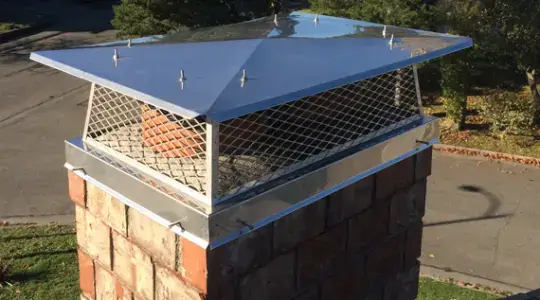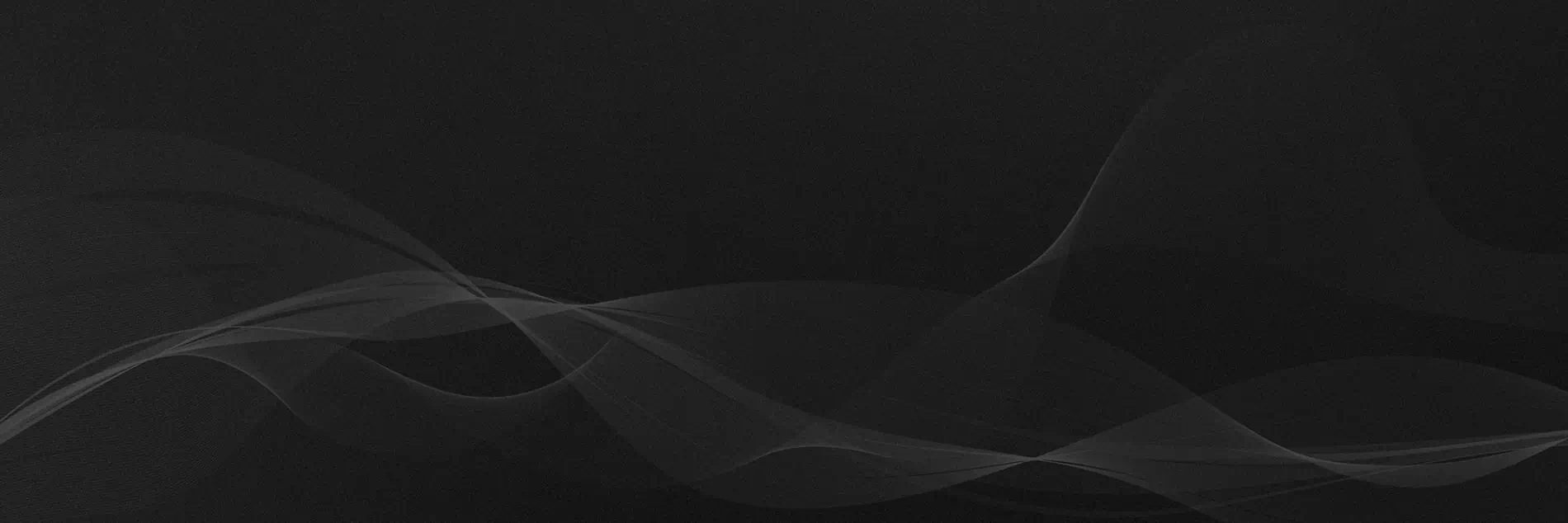
Chimney caps, despite their small size and affordability, are crucial chimney accessories that offer several benefits in terms of time, money, and stress-saving in the future. Typically, chimney caps consist of metal mesh covers that enclose your chimney flue, serving as a protective safety mechanism.
By preventing debris, animals, and water from entering your chimney, chimney caps minimize the need for frequent cleaning, repairs, and potential hazards. Additionally, chimney caps help reduce energy costs by preventing drafts and airflow through the chimney, which can lead to a more efficient heating system.
Therefore, investing in a chimney cap is a smart decision that can provide long-term benefits and peace of mind, ensuring the safety and functionality of your chimney.
Chimney caps can defend your chimney from destructive weather, including rain water (which can damage your liners, saturate your mortar joints, and produce mold) and wind (which can induce downdrafts that blow smoke back down into your home).
In addition to protecting your chimney from the elements, chimney caps also work to keep critters out of your flue. If a bird or animal manages to make its way into your chimney and becomes stuck, the body’s decomposition can encourage maggots, flies, and an undesirable stench to invade your home.
Chimney caps can also work as a barrier against lit embers that travel up your chimney, preventing them from landing on your roof and starting a fire. Finally, chimney caps keep out leaves, branches, twigs, and other natural debris from blocking your flue.
Although most chimney caps are similar in function and basic design, materials can vary.
GALVANIZED STEEL
Galvanized steel is the least expensive material used for chimney caps, but it is also the least durable. Galvanized steel will last approximately five years and is prone to corrosion and rust.
ALUMINUM
Although aluminum chimney caps are affordable and resistant to corrosion, they are less durable and sturdy than other chimney cap materials. Aluminum is light in weight, which means it is easier to bend and break during high winds or poor weather.
COPPER
Copper chimney caps have a classic, stylish look and are extremely durable. Their stability, durability, and resistance to corrosion make them an excellent investment. Copper caps do require more regular maintenance to keep them from turning green and dulling.
STAINLESS STEEL
Widely considered the best type of chimney cap material, stainless steel chimney caps balance cost and performance. Although stainless steel caps are more expensive than aluminum or galvanized steel, they are more durable and require very little maintenance.
In addition to material options, chimney caps also come in a variety of categories depending on your chimney’s needs.
STANDARD CHIMNEY CAPS
Standard chimney caps are a basic rectangular or square chimney cap that attaches onto the flue and protects the entire top of the chimney. For best results, standard chimney caps can be custom-made to fit the exact integrity of your chimney.
SINGLE-FLUE/SINGLE-WALL CHIMNEY CAPS
Single-flue chimney caps (sometimes referred to as single-wall chimney caps) are the typical category of caps for your average chimney. These caps attach with clamps, screws, legs, or brackets to fit the size of the flue externally.
WIND-DIRECTIONAL CHIMNEY CAPS
Designed to utilize wind to create stronger and directed updrafts, wind-directional chimney caps (sometimes referred to as draft-increasing chimney caps) force smoke upwards and out of the top of your chimney. These caps can assist with draft-heavy fireplaces and are commonly used for factory-built metal chimneys.
WIND-RESISTANT (HIGH-WIND) CHIMNEY CAPS
Wind-resistant chimney caps (sometimes referred to as high-wind chimney caps), are designed for protection from wind-induced downdrafts, keeping them to a minimum by eliminating any path for outside air to flow down the chimney.
HURRICANE/STORM CHIMNEY CAPS
Instead of an open metal mesh exterior, hurricane or storm chimney caps are designed with a layer of solid walls separated with space for airflow to increase insulation. The lack of mesh makes them more resistant to very high winds and less likely to get natural debris caught in them, while still providing optimal airflow.
Do you have questions about how to choose the perfect chimney cap for your home? Contact us today to set up a consultation.
Chimcare Chimney Caps provides the highest-quality chimney caps, fireplace dampers, rooftop dampers, and chase covers anywhere in the U.S. — all complete with a lifetime warranty. If you are a customer currently living in the Pacific Northwest, we will even conveniently deliver and install your new chimney cap at an affordable cost. Call or email us today!
What Are Chimney Caps and Why Every Home Needs One
Chimney caps are protective metal mesh covers that attach to the top of your chimney flue, serving as a crucial safety mechanism for your home. These essential accessories prevent debris, animals, and water from entering your chimney system while reducing energy costs by preventing unwanted drafts.
Despite their small size and affordability, these protective covers offer substantial long-term benefits that save homeowners time, money, and stress. By investing in quality chimney protection, you're making a smart decision that ensures the safety and functionality of your heating system for years to come.
Essential Protection Against the Elements
Weather Damage Prevention
Your chimney faces constant exposure to harsh weather conditions that can cause expensive damage over time. Rain water poses the greatest threat, as it can damage chimney liners, saturate mortar joints, and promote dangerous mold growth throughout your home.
Wind creates another significant challenge, often causing downdrafts that blow smoke back into your living spaces. Quality protective covers effectively combat these weather-related issues, maintaining proper airflow and preventing moisture infiltration.
Wildlife and Debris Barriers
Beyond weather protection, these covers serve as effective barriers against unwanted intruders. Birds, squirrels, and other animals frequently attempt to nest inside chimneys, creating dangerous blockages and unpleasant odors when decomposition occurs.
Natural debris like leaves, branches, and twigs can also accumulate in unprotected flues, creating fire hazards and reducing ventilation efficiency. Professional-grade protective mesh prevents these materials from entering your system.
Spark Arrestor Functionality
Modern protective covers also function as spark arrestors, preventing lit embers from traveling up your chimney and potentially igniting roof materials. This fire prevention feature is particularly important in areas prone to wildfire conditions, as outlined in National Fire Protection Association guidelines.
Material Options and Durability Considerations
Galvanized Steel: Budget-Friendly Option
Galvanized steel represents the most economical material choice for protective covers, though it offers limited durability compared to premium alternatives. These covers typically last approximately five years before showing signs of corrosion and rust, making them suitable for temporary solutions or budget-conscious homeowners.
Aluminum: Corrosion-Resistant Choice
Aluminum covers provide better corrosion resistance than galvanized steel while remaining affordable. However, they lack the structural durability of premium materials, making them less suitable for areas with extreme weather conditions.
Copper: Classic Elegance
Copper covers combine classic aesthetic appeal with exceptional durability. Their natural resistance to corrosion and structural stability make them an excellent long-term investment. Regular maintenance is required to prevent the characteristic green patina that develops over time.
Stainless Steel: Premium Performance
Widely considered the superior material choice, stainless steel covers offer the optimal balance of cost and performance. According to Chimney Safety Institute of America standards, stainless steel provides superior durability with minimal maintenance requirements, making it the preferred choice for most applications.
Different Categories for Specific Needs
Standard Protection Systems
Standard covers feature basic rectangular or square designs that attach directly to the flue opening. These versatile options protect the entire chimney top and can be custom-manufactured to fit exact specifications for optimal performance.
Single-Flue Attachment Systems
Single-flue covers represent the most common category for average residential chimneys. These systems attach using clamps, screws, legs, or brackets designed to fit specific flue dimensions externally, providing targeted protection for individual openings.
Wind-Directional Draft Enhancement
Wind-directional chimney caps utilize aerodynamic principles to create stronger, directed updrafts that force smoke upward and out of the chimney. These specialized systems assist with draft-heavy fireplaces and are commonly specified for factory-built metal chimneys.
The unique design forces wind around the exterior rather than allowing entry into the flue, creating enhanced ventilation through natural air movement.
Wind-Resistant High-Performance Options
Wind-resistant covers focus on protection against wind-induced downdrafts, eliminating pathways for outside air to flow down the chimney. These systems maintain consistent performance even during severe weather conditions.
Hurricane and Storm-Rated Systems
Hurricane-rated covers feature solid wall construction with strategically placed airflow openings that increase insulation while maintaining proper ventilation. These premium systems provide maximum protection in extreme weather zones.
Professional Installation and Maintenance
Installation Considerations
Proper installation requires careful attention to manufacturer specifications and local building codes. The International Code Council guidelines provide detailed requirements for residential chimney systems that must be followed for safety and insurance compliance.
Many homeowners can complete basic installations with standard tools, though complex configurations may require professional expertise to ensure optimal performance and safety.
Ongoing Maintenance Requirements
Regular maintenance extends the lifespan of your protective system while ensuring continued effectiveness. Annual inspections should include checking for loose mounting hardware, clearing debris accumulation, and verifying proper mesh screen integrity.
Professional chimney technicians can identify potential issues during routine maintenance visits, preventing minor problems from developing into costly repairs.
Cost-Benefit Analysis and Long-Term Value
Investment Protection
Quality protective covers provide significant protection against potential damage that could cost thousands of dollars to repair. This modest investment offers substantial value compared to the cost of major chimney repairs.
Water damage to chimney masonry often requires extensive repairs, while animal removal services charge substantial fees plus additional costs for damage remediation. Installing proper protection prevents these expensive problems from occurring.
Energy Efficiency Benefits
Properly installed covers reduce energy costs by preventing heated or cooled air from escaping through the chimney when the fireplace isn't in use. This improved efficiency can result in noticeable utility bill reductions over time.
Expert Selection Guidance
Choosing the appropriate protective system depends on several factors including local climate conditions, chimney construction type, and specific performance requirements. Professional consultation ensures optimal product selection and installation for your unique situation.
For comprehensive guidance on selecting and maintaining chimney protection systems, consult with certified professionals who understand local building codes and manufacturer specifications. The right protective cover will provide years of reliable protection for your home and chimney system.
Frequently Asked Questions About Chimney Caps
How often should protective covers be inspected?
Annual inspections are recommended to ensure proper functionality and identify any maintenance needs before they become major issues.
Can homeowners install these systems themselves?
Many standard installations can be completed by homeowners with basic tools, though professional installation is recommended for complex configurations or when safety concerns exist.
What size cover do I need for my chimney?
Proper sizing requires accurate measurements of your flue or chimney opening. Consult with professionals to ensure correct fit and optimal performance.

 We Ship Anywhere USA & Canada
We Ship Anywhere USA & Canada

